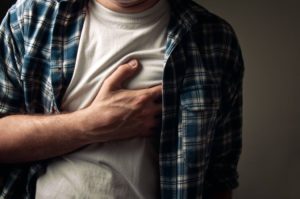
Nearly half of the people, who have a heart attack, don’t realize it at the time. These so-called silent heart attacks are only diagnosed after the event, when a recording of the heart’s electrical activity (an electrocardiogram or ECG) or another test reveals evidence of damage that has caused to the heart.
People offer an explanation for this phenomenon, as may be a higher-than-average tolerance for pain. Some mistake their symptoms, as indigestion or muscle pain, while others may feel pain, but in parts of their upper body other than the center of the chest, says Dr. Kenneth Rosenfield, who heads the vascular medicine and intervention section at Harvard-affiliated Massachusetts General Hospital.
Different sensations?
“Many people don’t realize that during a heart attack, the classic symptom of chest pain happens only about half of the time,” says Dr Rosenfield.
People sometimes describe heart attack symptoms as chest discomfort or pressure, while others say they feel an intense, crushing sensation or a deep ache similar to a toothache.
Certain people are less sensitive to pain than others, or they may deny their pain and “tough it out” because they don’t want to appear to be weak. Not everyone has a good sense of their own pain tolerance, however, and a host of other factors (such as your emotional state) can affect pain perception. Of note: people with diabetes may be less sensitive to pain because the disease can deaden nerves (a condition known as diabetic neuropathy), theoretically raising their risk for a silent heart attack.

Where it may hurt
Dr. Rosenfield added, “During a heart attack, the location of the pain can also vary quite a bit from person to person,” It may occur in the arm, shoulder, neck, jaw, or elsewhere in the upper half of the body.
“I had one patient who had earlobe pain, and another who felt pain in his wrist,” says Dr. Rosenfield. Other non-classic symptoms people often don’t attribute to a heart attack include nausea, vomiting, and weakness.
During his career, Dr. Rosenfield has seen thousands of people who have, had heart attack. “There’s no question that women are more likely to experience non-classic heart attack symptoms, but it’s important to remember that men can have those symptoms, too.”
Although the most common sign of a heart attack in both men and women is the classic one, discomfort in the center of the chest that spreads through the upper body, this symptom doesn’t always occur. Some people experience non-classic symptoms, and these may be slightly more frequent in women and in older people.
Source: Harvard Medical School


